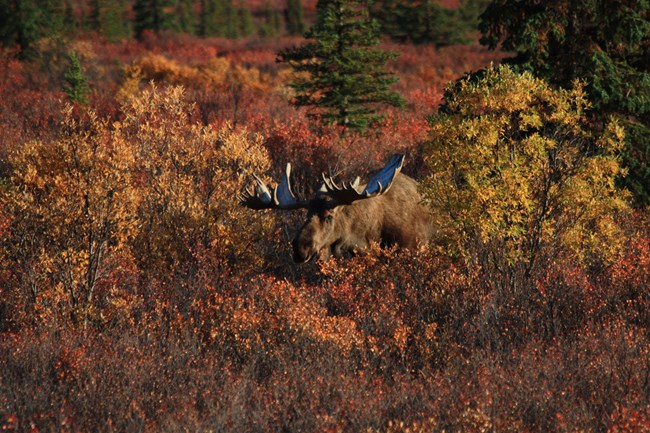
Iñupiaq Name: Tiniikaq Range: They can be found in North America as well as Eurasia (though in Eurasian countries they may be referred to as elk). The largest of the subspecies is found in Alaska. Habitat: Moose can be found in areas of dense vegetation, typically willows in our parks, timberline plateaus, foraging along rivers, lakes, and marshes as well as forests. They will move seasonally for calving, mating, and wintering. Life History: Bulls can reach sexual maturity as yearlings (in the fall following their birth). Cows reach sexual maturity anywhere from 16-28 months. Breeding happens in the fall, calf gestates for roughly 230 days and can be born mid May to early June. Twins and triplets can occur, but one calf is most common, with a birth weight of 28-35 lbs. Calves are aggressively defended by the cow, with attacks potentially being fatal. During the first 5 months, calves will grow quickly, sometimes reaching 500 lbs. By fall, calves are typically weened and the cow is ready for breeding again. Cows will generally chase off their calves before the new calf is born. Diet: During the summer months moose eat various plants that are around. Willow and lake/pond plants being quite common. In the leaner months they will eat twigs and branches. Predators: Moose have few predators, but the ones they have are formidable. Wolves and bears will hunt moose, especially young and old individuals. Humans also hunt moose. Though relatively small, wolverine are known to hunt moose. Iñupiaq Cultural Use: Moose were, and still are, a source of food for local people. Their hides can be used for bedding or padding, Historically, their antlers and bones were used to make tools. |
Last updated: September 19, 2023
